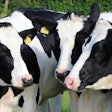
Demand for chicken meat should remain strong this year, as demand for low-cost animal protein increases. While the demand side remains positive, on the supply side, producers will continue to face high production costs and be affected by disease outbreaks.
High costs to continue
While feed prices are forecast to soften, from a historic perspective they will remain high, and volatility can be expected due to geopolitical uncertainty. Similarly, energy prices are expected to remain volatile, although this will vary by geography. Labor may also be an issue, given the inflationary environment is likely to push labor costs higher, warns Rabobank in its latest Poultry Quarterly, published in December last year.
In the face of these higher costs, some smaller and midsized companies have reduced supply, and this trend is likely to continue. Some markets are, however, risking oversupply, but global markets are expected to remain strong.
Conditions in Europe, Japan and several Middle Eastern countries are expected to remain strong, while in the U.S., producers have increased supply despite demand coming under pressure, although this should improve in the second half of the year. Brazil is facing weak domestic demand, but the industry continues to perform well in international markets.
Avian influenza (AI) will also continue to impact markets. Following record outbreaks in Europe and North America, the disease has now emerged in South America.
Global trade should remain strong this year, given the tight conditions in many markets.
US
Prices in the U.S. should stabilize over the opening months of the year, following lower prices and slimmer margins at the close of 2022 in response to higher production and softer demand. Prices are likely to be below 2022 levels throughout the first half of the year, but above the average achieved over the last five years. As production growth slows and competing beef supplies sharply fall, prices should trend higher during the second half of the year.
In late December, Rabobank reported that integrators were already stabilizing production and that this would help to stabilize prices in Q1. Growth will be more modest in the first half of this year, as the industry attempts to offset high feed costs. However, it will be more robust in the second half.
Where exports are concerned, the outlook remains challenging.
Mexico
Mexican chicken production is thought to have grown by 2.4% last year. While production may have reached a record high in October, for the first half of this year, production growth is expected to slow. Rising feed costs and AI disruptions will be behind this slowdown, while imports may continue to affect margins.
Rabobank notes that the Mexican poultry industry relies on imported feed supplies and has seen prices move 25% above year-ago levels. The scheduled ban on GMO imports, due to start in 2024, will add further upside risk to feed costs this year. Although exceptions are likely to limit the impact.
Imports are likely to increase in 2023 as domestic supplies tighten.
Brazil
Exports are thought to have achieved another record last year, estimated to have been 5% higher by volume and 29% higher by value.
Higher feed costs have been absorbed by the external market and are expected to soften as the year progresses.
The country is on high alert for AI, given outbreaks in neighboring countries. However, the disease has also brought opportunities for Brazilian exporters.
Within Brazil, broiler consumption has shown signs of saturation. As the competitiveness of beef has increased, raising broiler meat consumption on the home market this year could prove difficult.
China
Chicken meat supplies are expected to remain tight in China over the first half, which will encourage imports, contrasting with the first 10 months of last year when imports declined.
Although under pressure, margins in China were positive last year, despite rising costs for day-old chicks and feed, but demand for white feather birds was poor due to COVID-19 restrictions. Exports proved positive due to tight global demand.
Thailand
The Thai poultry industry had a strong 2022, with most leading players reporting robust Q3 results. The industry benefitted from a tight domestic market and difficulties in the swine industry. For this year, the industry is expected to expand by 2-3%, below the average long-term trend pre-pandemic of 5-8%.
The Thai industry experienced exceptionally strong Q3 exports, reaching a historic level of 285,000 metric tons. This was due to strong demand from Europe, Singapore and Japan.
For the year ahead, the outlook remains strong, especially during the first half. The second half, however, could be characterized by oversupply.
Global markets will remain strong, to the benefit of the Thai industry, which will also benefit from weakening feed prices. However, Rabobank reports that there are numerous expansion projects underway and that, without discipline, this could lead to a period of oversupply.

Europe
The outlook for the European market remains strong. There is little indication that production growth will return, despite some countries, such as Poland and Germany, increasing supply.
High feed costs, the risks of higher energy costs and more AI cases are expected to limit growth, but demand is expected to remain high, as consumers continue to trade down from more expensive animal protein products.
The biggest uncertainties for the industry are consumer acceptance of current high prices and rising import volumes from Brazil and Ukraine. Imports rose sharply last year – in the region of 17% – while exports contracted on the back of AI.
2022's global poultry production higher, despite headwinds



















